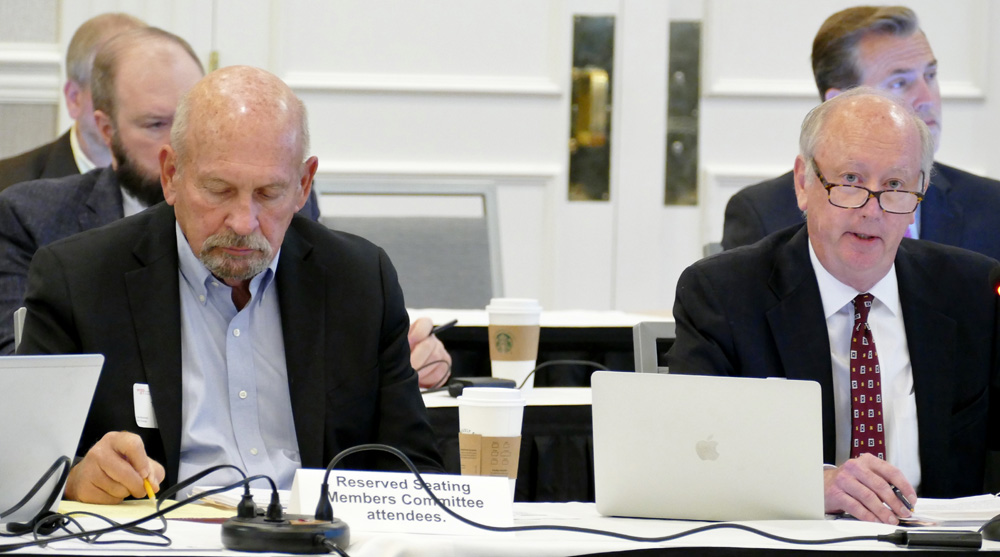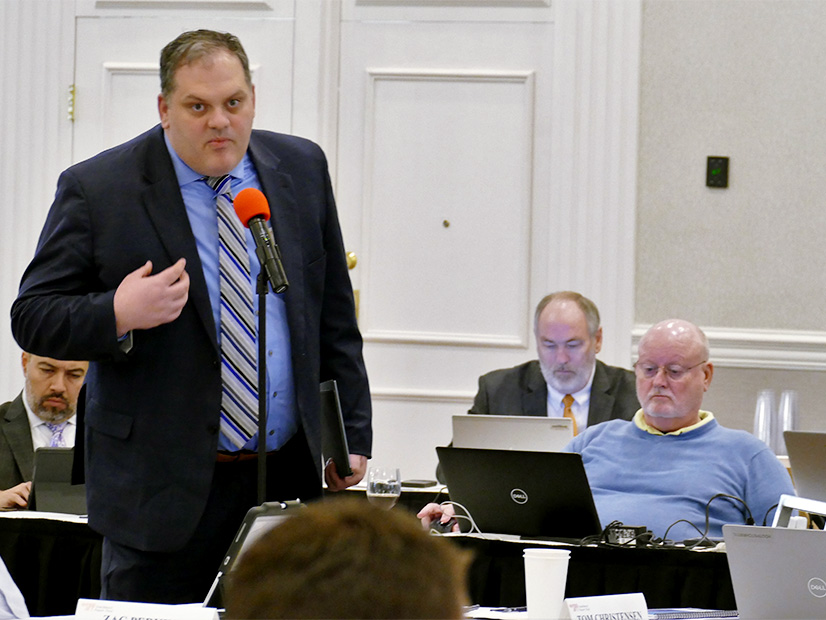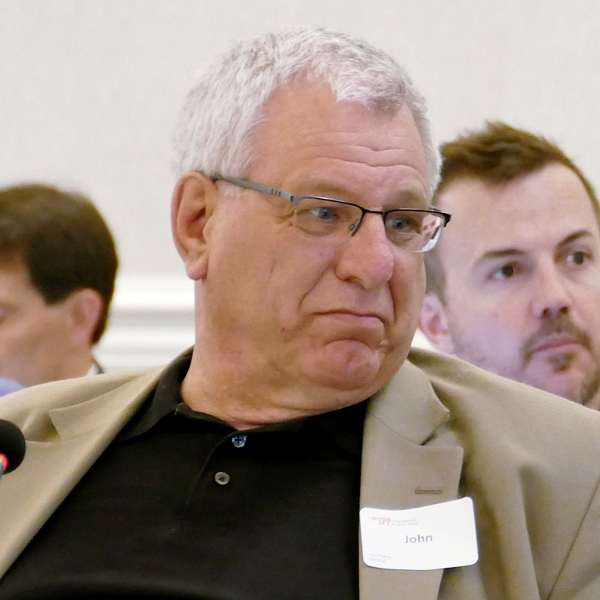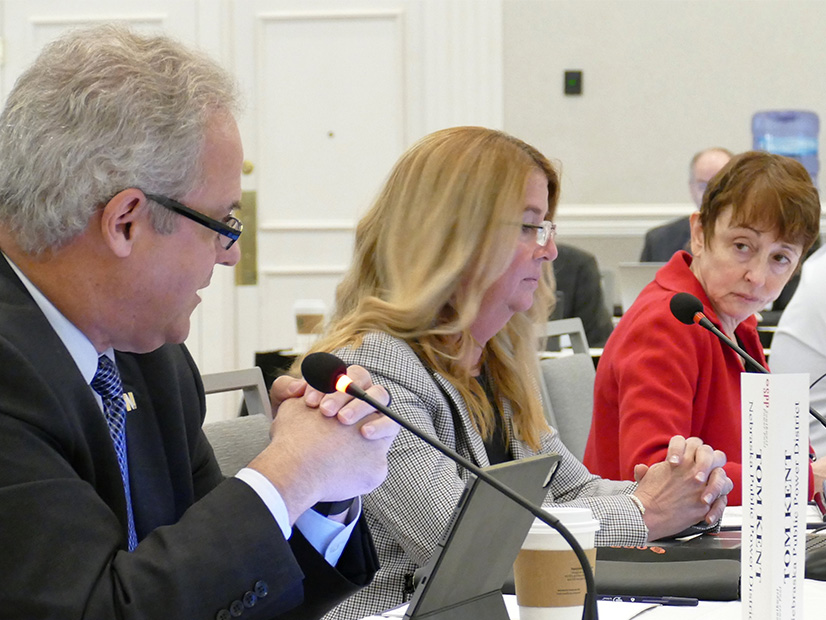Directors Approve RTO’s 4th Competitive Project Under Order 1000
DALLAS — SPP’s Board of Directors last week approved the RTO’s fourth competitive transmission project, awarding a $55 million, 345-kV facility in Oklahoma to NextEra Energy Transmission (NEET) Southwest (NYSE:NEE).
An industry expert panel (IEP) comprising five industry experts recommended the NextEra subsidiary be selected as the project’s designated transmission owner. The panel gave NEET Southwest’s bid the highest score among six other competitors, saying it presented the best evidence that it could produce a successful project that is constructed on time and within budget.

“There’s a clear winner here,” IEP Chair Steve Strickland, a 35-year veteran with Entergy Arkansas, told the board and Members Committee. “It’s significant to note that while [its bid] provided the highest cost savings, it also scored highest in engineering design and management. That indicated there is substance behind [the bid] in meeting cost commitments.”
The panel gave NEET Southwest’s bid a 1,000.38 score, 70 points higher than the next closest competitor. The other proposals’ scores ranged from 843 to 930.13. NEET Southwest’s bid received 225 points for rate analysis, representing the lowest cost to SPP customers in both construction and operating costs. The losing bids’ costs were between $74 million and $97 million. All seven proposals received the maximum 100 incentive points under SPP’s competitive transmission owner selection process, which is required by FERC Order 1000.
Strickland assured the board that “significant” supply chain issues and cost increases would not be an issue.
The IEP unanimously recommended Transource Oklahoma as the alternate designated TO after its bid received the second-highest point total.
The 48.4-mile connection between substations in Minco and Draper is an economic project designed to ease congestion around Oklahoma City. It has a July 2024 completion date, six months ahead of schedule.
“The early in-service date would allow lower-cost energy to flow across the project’s transmission lines, to the benefit of SPP’s customers, sooner than targeted by SPP,” the panel said in its report.
Matt Valle, NEET’s president, said the company was pleased to win the project’s construction. The project is the second time NEET Southwest has been awarded a competitive project, having won a bid last October for the 345-kV Wolf Creek-Blackberry project in Kansas and Missouri. (See SPP Board of Directors/Members Committee Briefs: Oct. 26, 2021.)
“This project award … furthers our goal of creating America’s leading competitive transmission company and is consistent with our strategy of adding high-quality regulated assets to our portfolio,” Valle said in a statement.
Oklahoma Gas & Electric opposed both motions approving NEET Southwest and Transource as the projects’ designated TOs. Seven members abstained from the NEET Southwest vote and six from the Transource vote.
SPP previously has approved two other competitive projects, the first of which was subsequently withdrawn over changing load projections. (See SPP Cancels First Competitive Tx Project, Citing Falling Demand Projections.)
A third potential project was withdrawn shortly after it went out for bids last year. (See SPP Board/Members Committee Briefs: April 28, 2021.)
Gas Prices, Congestion Up in 2021
Keith Collins, vice president of market monitoring at SPP, said rising natural gas prices and congestion from increased wind capacity is contributing to ongoing negative prices, curtailments and make-whole payments.
Sharing a draft of the Market Monitoring Unit’s State of the Market report, Collins said gas prices have doubled to $7/MMBtu and congestion was “materially higher” last year — at $1.2 billion — and had little to do with the February winter storm.
“Clearly, congestion is having an impact,” he said. “As renewables are more and more a part of the system, we should anticipate those effects to continue and start taking action. In the interim, we’ll continue to experience these challenges.”
According to the report, SPP’s installed wind capacity hit 30.5 GW last year, up from 27.3 GW in 2020 and 22.5 GW in 2019. Wind curtailments averaged 675 GWh in 2021, up from 130 GWh in 2019.
The increase in gas prices has made coal more competitive, Collins said. Coal accounted for 36% of SPP’s generation in 2021, just nudging out wind at 35%. “We see those trends continuing into 2022,” he said.
The MMU is recommending an emphasis on previous years’ recommendations by updating market and outage requirements to improve transmission congestion rights’ funding; improving market-to-market (M2M) efficiencies by collaborating with MISO; and addressing inefficiencies when forecasted resources under-schedule the day-ahead market.
The Monitor added one new recommendation, calling for SPP to expand or adjust the multiconfiguration combined cycle resource model to include additional multiconfiguration resource types. Collins said coal and other resources would be able to offer into the market more efficiently with the multiconfiguration logic’s additional applications.
Collins also drew attention to recent comments by David Patton, MISO’s Independent Market Monitor, that SPP is not properly recognizing M2M flowgate constraints with its seam neighbor in its day-ahead market. Patton told a MISO stakeholder group that the oversight must be costing SPP members several million dollars in balancing congestion. (See MISO and SPP Announce New Interregional Stakeholder Meetings.)
SPP responded that it does model MISO’s system and constraints in the day-ahead market and that it believes the market should best reflect expected real-time operating conditions and not necessarily create day-ahead congestion based on calculated firm flow entitlement values.
“The difference between SPP and MISO is how we reflect expected operating conditions in the day-ahead market,” SPP spokesperson Meghan Sever said in an email, saying the RTO has been transparent about its approach. “MISO automatically binds on constraints based on a calculated firm flow entitlement value and not real flows. SPP employs an injection/withdrawal projection based on similar operating days and expected actual operating conditions.”
Developers’ Self-funding Appeal Fails
The directors rejected an appeal by renewable developers of a revision request (RR465) that allows transmission facilities constructed to facilitate generator interconnections to be treated on a consistent cost basis with other infrastructure if the TO self-funds the work.
The measure easily passed over the developers’ objections last month during the Markets and Operations Policy Committee meeting. (See “Surplus Interconnection Service Change Remanded,” SPP Markets and Operations Policy Committee Briefs: April 11-12, 2022.) As is their right, they filed an appeal with the board that it further consider the self-funding mechanism and that it do so “more holistically” in the stakeholder process by including input from the Regional State Committee (RSC) and the MMU.

Writing for the seven developers April 22, EDP Renewables North America’s David Mindham said SPP TOs “severely mischaracterized” legal precedent by claiming “they are simply implementing a mechanism to which they already have a right.” He argued that FERC has never indicated that self-funding is allowed outside of MISO “and has been extremely clear” that the MISO example does not require its implementation in any other region.
He also noted that FERC’s decision to grant self-funding to MISO TOs is currently before the D.C. Circuit Court of Appeals and that the commission had not found a similar PJM proposal to be just and reasonable, though it did allow it to go into effect subject to refund after a paper hearing. (See MISO Gauging Aftershocks of TO Self-fund Order.) And on Friday, FERC rejected a MISO proposal to allow TO self-funding for merchant HVDC projects. (See related story, FERC Blocks MISO Self-fund Rule for Merchant HVDC Line Upgrades.)
“To use that as the basis that it should be used in SPP is not right,” Mindham told the board last week. “This construct increases the costs of network interconnection upgrades to the customers. It would behoove all of us to have that discussion broadly within the stakeholder process. We should have a discussion before suggesting a cost-recovery mechanism.”
Southwest Public Service’s Jarred Cooley countered that there had been significant discussion of the issue and that SPP’s tariff already includes language that allows self-funding, which he said can be potentially discriminatory.
“This revision request was identified to help produce a consistent and repeatable process for the staff and TOs, to put the rules around it so that then these opportunities to fund on the TO side are more clear and transparent,” Cooley said.
SPP Legal counsel Paul Suskie said staff would ensure the RSC is educated on RR465’s documents and provides feedback before filing its proposal at FERC.
The Advanced Power Alliance, Enel Green Power North America and Tenaska all sided in favor of the appeal during the Members Committee’s vote.
Counterflow Optimization not Dead Yet
The board and stakeholders agreed with board Chair Larry Altenbaumer’s suggestion to direct staff and stakeholders to work together in reaching some semblance of consensus and adding counterflow optimization (CFO) to the market.
It hasn’t been easy. The Holistic Integrated Tariff Team recommended three years ago that counterflow optimization, limited to excess auction revenue, be added to SPP’s market mechanism that hedges load against congestion charges. The process, which keeps system transmission flows between two points in balanced, was meant to address concerns about how congestion rights instruments are awarded and the current process’s efficiency.
The Market Working Group spent months trying to reach agreement on how best to add CFO, only to eventually turn it over to the Strategic Planning Committee. (See SPP SPC Takes on Congestion Hedging Issues.)
During the MOPC meeting earlier last month, stakeholders rejected a recommendation to stick with the status quo, three months after agreeing with staff to leave the market construct untouched. (See SPP Markets and Operations Policy Committee Briefs: April 11-12, 2022.)
“There’s been no shortage of analysis. It’s simply a lack of consensus,” Altenbaumer said. “Lack of consensus doesn’t mean we have a lack of an issue. It’s reached a point where it doesn’t mean we should delay our concerns.”
Altenbaumer said he discussed a path forward with SPP’s leadership. Under his proposal, stakeholders, the MMU and state regulators will submit specific congestion-hedging recommendations with near- and long-term solutions. Staff will be responsible for setting parameters for the submissions, reviewing them and conducting a workshop to summarize the recommendations.
With staff freed from the stakeholder process, Altenbaumer envisions them working with regulators, the Strategic Planning Committee and the Cost Allocation Working Group (CAWG) to develop a final recommendation that could be brought to MOPC and the board in October.
NPPD Project to be Re-evaluated
The directors approved a re-evaluation of a 115-kV project interconnecting an industrial facility in Nebraska that has undergone a 24% escalation in costs.
Nebraska Public Power District (NPPD) pulled the item off the consent agenda so that it could move ahead with the project. Its costs went from $43.4 million to $53.8 million when a 345-kV substation was moved, resulting in $3.9 million for additional 345-kV ties. A 115-kV substation was expanded to accommodate three load-serving transformers, adding another $3.7 million in costs.
“We fully expect the answer will be the same,” NPPD CEO Tom Kent said, anticipating that SPP’s restudy to again result in a notification to construct. “I don’t see the value of going through the restudy process and getting the same result when the planning staff has other important work to do. We want the board to say, ‘No,’ so we can move forward.”
NPPD’s Tom Kent argues against re-evaluating a project as SPP CEO Barbara Sugg, Board Chair Susan Certoma listen. | © RTO Insider LLC
“A cursory look suggests it’s not likely to change,” said Antoine Lucas, SPP’s vice president of engineering. “All re-evaluations aren’t created equal, but the nature of this particular project will be simpler than some others. It’s not a very heavy lift.”
NPPD staff said the project’s load has changed several times, and the utility only recently firmed up its design with the industrial facility, which will produce hydrogen and carbon black. They said the Project Cost Working Group was notified as soon as NPPD had a handle on the cost increase.
With the board’s action, the restudy’s results will have to go before the Transmission Working Group and MOPC before being brought back to the board, possibly in July.
“We can probably live with the outcome. I don’t think it’s the right thing to use resources when we know outcome,” Kent said. “At the end of the day, we’ll be fine. We’ll move forward.”
RSC Adds 2 New Members
The RSC welcomed two new members during its first in-person meeting in more than two years: Minnesota Public Utilities Commissioner John Tuma and Nebraska Power Review Board Member Chuck Hutchison.
 John Tuma, Minnesota Public Utilities Commission | © RTO Insider LLC
John Tuma, Minnesota Public Utilities Commission | © RTO Insider LLCTuma was eligible for membership because SPP member East River Electric Cooperative has distribution cooperatives with load in Minnesota. The RSC comprises state regulators and responsible for providing input of approval of rate-related issues and other matters of “regional importance.”
Hutchison replaces Dennis Grennan, who chaired the RSC in 2020.
In other actions during the April 25 meeting, the committee directed the CAWG to analyze RR465 for any potential effects on retail rates. It also endorsed staff’s recommendation to not add CFO to the current market construct and approved a pair of changes to its bylaws that remove a membership classification not used in 18 years and clarify that RSC membership is based on SPP’s RTO footprint.
SPP Releases Online Annual Report
SPP’s slick digital 2021 annual report finds the RTO at “another pivotal point” in its continuing growth and development with both challenges and opportunities, including the continuing COVID-19 pandemic, the historic February 2021 winter storm and establishing relationships with new stakeholders in the West.
In their joint letter to stakeholders, CEO Barbara Sugg and Chair Altenbaumer said the previous two years have “prepared us well for the next chapter in SPP’s history.”
“We’ve learned valuable lessons from managing reliability in historically unprecedented circumstances, collaborating closely while separated by physical distance and building consensus among an increasingly diverse group of stakeholders,” they wrote. “The adaptability we have shown in responding to the unexpected will remain an important part of our ongoing strategy.”




